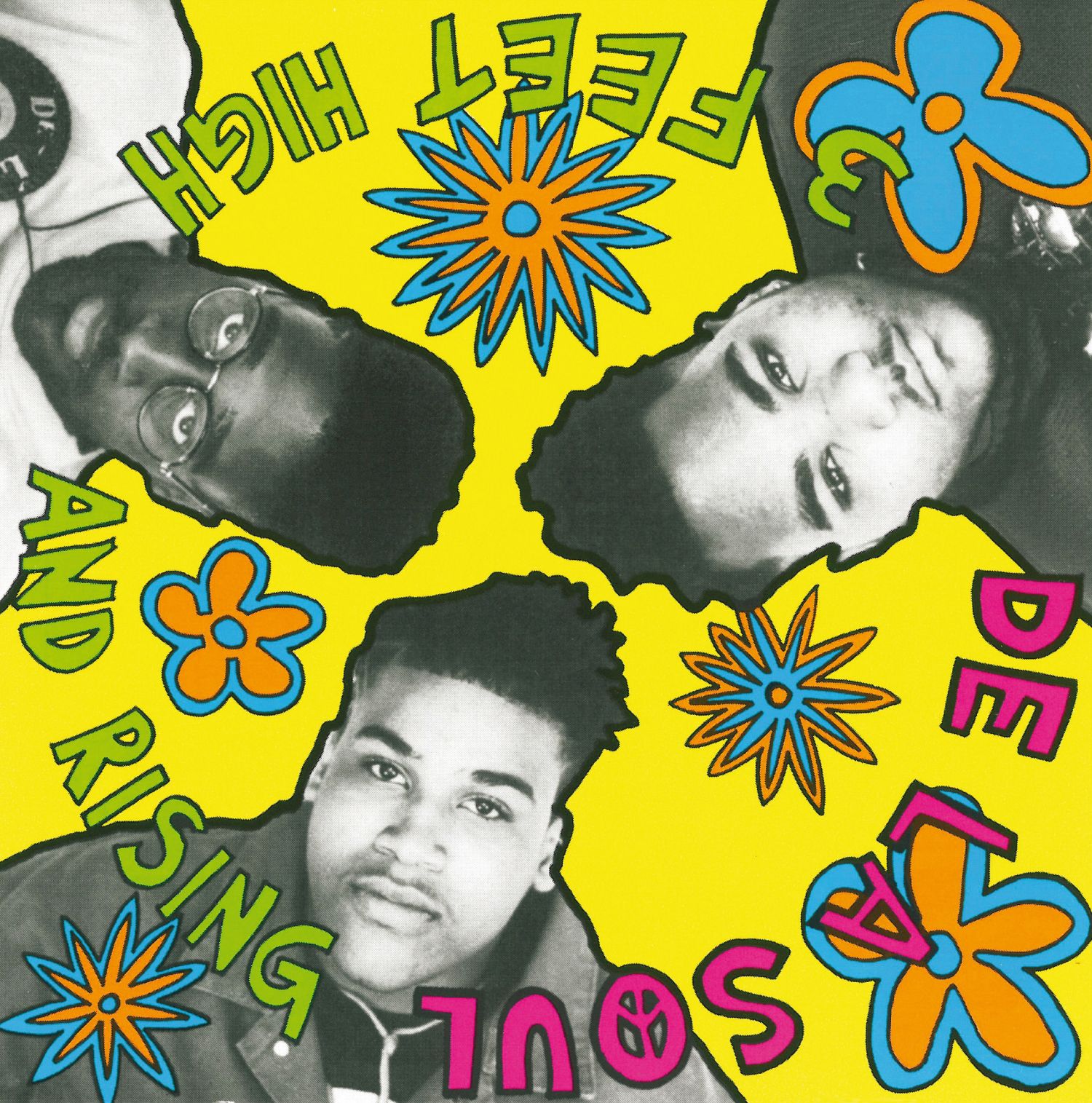De La Soul’s ‘3 Feet High and Rising’ turns 30

De La Soul
3 Feet High and Rising
Tommy Boy Records · March 3, 1989
30 years ago, on March 3rd, 1989, American hip-hop trio De La Soul released their ground-breaking debut studio album, 3 Feet High and Rising. The group originally comprised of Posdnuos, Trugoy, and Maseo, who came together when they were in high school. For their first album, the group enlisted the talent of fellow Long Island producer Prince Paul, who had built a reputation as a rising local star. The album’s name is derived from the Johnny Cash song “Five Feet High and Rising” and consists of an impressive 24 tracks with a total run time of an hour and 7 minutes. This album was released at a time when hip-hop was beginning to gain international attention for its depiction of inner-city life and calls for social justice. This rhetoric, pioneered by the likes of N.W.A., Public Enemy, and Rakim, just to name a few, created a culture built around aggressive, political messages that were meant to invoke strong emotions from listeners. In the midst of these ambitious, remarkably powerful albums, De La Soul not only delivered a timeless classic, but did so by innovating and perfecting an entirely new style of hip-hop and storytelling.
De La Soul captured audiences by painting pictures that were quirky, funny, and most of all, genuine. Lyrically, 3 Feet High and Rising is full of unique phrases and inside jokes (for example, “buddy” is used to mean “beautiful body”). The album contains playful social commentary, showcases of penmanship and advanced wordplay, and nostalgic tales of young boys making their way through life and love; the latter of these serves as the main theme of the album’s 6th track, “Jenifa Taught Me (Derwin’s Revenge).” This album sees the three Long Island rappers perfectly walk the line between expanding their artistry and staying true to who they are deep down. Everything from the production to the vocals are incredibly diverse, yet they come together to form a single, consistent sound. The album revolutionized the genre by introducing numerous new recording techniques, including mixing, sampling, and the use of comedy sketches. The track “Me, Myself and I,” which peaked at #34 on the US Billboard Hot 100 and #1 on US Billboard Hot Rap Songs, uses samples from 5 different songs in just one track. The second track on the album, “The Magic Number,” samples parts from 6 different songs.
3 Feet High and Rising is credited with ushering in the “skit” era of hip-hop albums. A “skit” is a short track filled with humor or commentary that is used as a space to transition between songs, carrying the listener through the album. The album also helped influence the rise of alternative and jazz rap that would become staples in the sounds of legendary groups like A Tribe Called Quest, The Pharcyde, and Digable Planets. Upon its release, 3 Feet High and Rising was acclaimed by critics and fans alike. Because of the overwhelmingly positive, hippie-like essence that bleeds throughout the album, the group drew comparisons to the similarly innovative Beatles, being called the “Sgt. Pepper of hip hop” by the Village Voice. De La Soul and their stylistically similar New York companions Jungle Brothers and A Tribe Called Quest were heralded as the most engaging, progressive, and talented emcees in rap, and were considered the future of the genre. They were not as commercially successful as the politically charged wave of hip-hop or the dance-inducing, hazy G-Funk style that was beginning to gain traction on the West Coast. However, 3 Feet High and Rising served as a model for the power of experimentation in one of the most dynamic genres of music.
In the years following its release, the impact and acclaim of this monumental moment in hip-hop can still be felt. It was ranked #7 on Spin’s “100 Greatest Albums, 1985-2005,” #346 on Rolling Stone magazine’s “500 Greatest Albums of All Time,” was selected as one of The Source’s “100 Best Rap Albums” and was included in the book 1001 Albums You Must Hear Before You Die. In 2010, it was selected by the Library of Congress to be included in the National Recording Registry for being a body of work that is significant to American culture, and whose message stands the test of time. From its colorful, iconic album cover to the deep, yet enjoyable intricacies in the lyrics, it’s been 30 years and De La Soul is still here to stay.